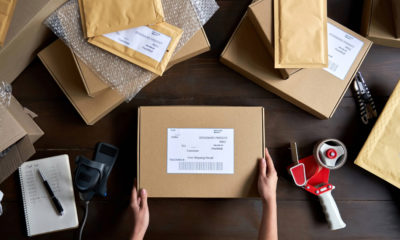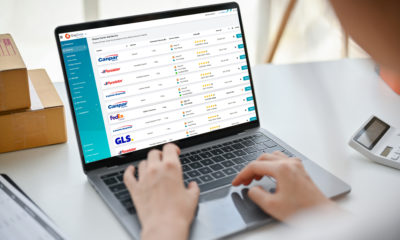Packing and shipping are fundamental to your customer satisfaction. Why? Because it’s a determining factor in the condition your customer receives their shipment.
If you’re shipping Faberge Eggs with a couple of newspapers shoved in a box, for example, your business might not see the success you were hoping. However, if you follow a few rules of thumb when it comes to packing and shipping, your customers are more likely to trust you with their purchases.
Packing and Shipping in a Suitable Container
Starting from the outside-in, protecting your items from any external force is imperative. But how to determine what boxes and containers are going to provide the needed protection? Start with the Edge Crush Test (ECT).
Determining the ability of certain cardboard construction to crush resistance, the ECT is a laboratory cross-directional strength test method measuring corrugated board. This determines peak top-to-bottom compression strength for single-wall, regular slotted containers.
Another test to determine the right board thickness and box perimeter for your needs is the box compression test (BCT). Supplementing the ECT, BCT measures the compressive strength of packages based on deformation vs compressive force.
These tests help you decide on the right material for protecting your shipment so your customer receives it in one piece. And not only the degree of protection needed from any external force, but also internal force. Larger, heavier items require shipment boxes with more reinforcement to ensure containment.
Packing Fragile Goods
Once you have a strong enough box, another question to consider is how fragile your shipment is. If you’re shipping a screwdriver a hundred miles away, you may not be overly concerned with protecting it. But if you’re shipping a more delicate item, there are a few factors to consider.
Package Size
Because shipping damage typically occurs when an item within a shipping box is jostled, making for a snug package is beneficial. This will remove dead space from a box, preventing an item from rattling around.
Packing Material
In addition to the appropriate size packaging, protecting your shipment with packing material is also important. Individually wrapping your items before placing them in the shipment box will provide that extra layer of protection. And as an extra measure to prevent damage, protect multiple items from one another, but pack them tightly.
You may also want to weigh the fragility of your shipment in conjunction with the distance it has to travel. The further the distance, perhaps the more protection you’ll want. This will help you decide how snug you want the shipment box and how much protective packing material you’ll need.
When weighing your packing and shipping options, make sure you’re partnering with the right shipping service. The ShipTime search engine aggregates data to find you the best shipping rates available. Working with the most accredited shipping providers, they also help you take the hassle out of your shipment operations with customer-centric services.
Finding you the best possible shipping rates, ShipTime provides all relevant shipping information on one screen. The ShipTime dashboard speeds your shipping quote with predefined box sizes.
The ShipTime dashboard solution also provides predefined incentive rewards and the “My Pickups” functionality, allowing you to see scheduled pickups and times. They cover all your bases when it comes to efficient tracking and delivery.
Learn more here.


 By ShipTime
By ShipTime


